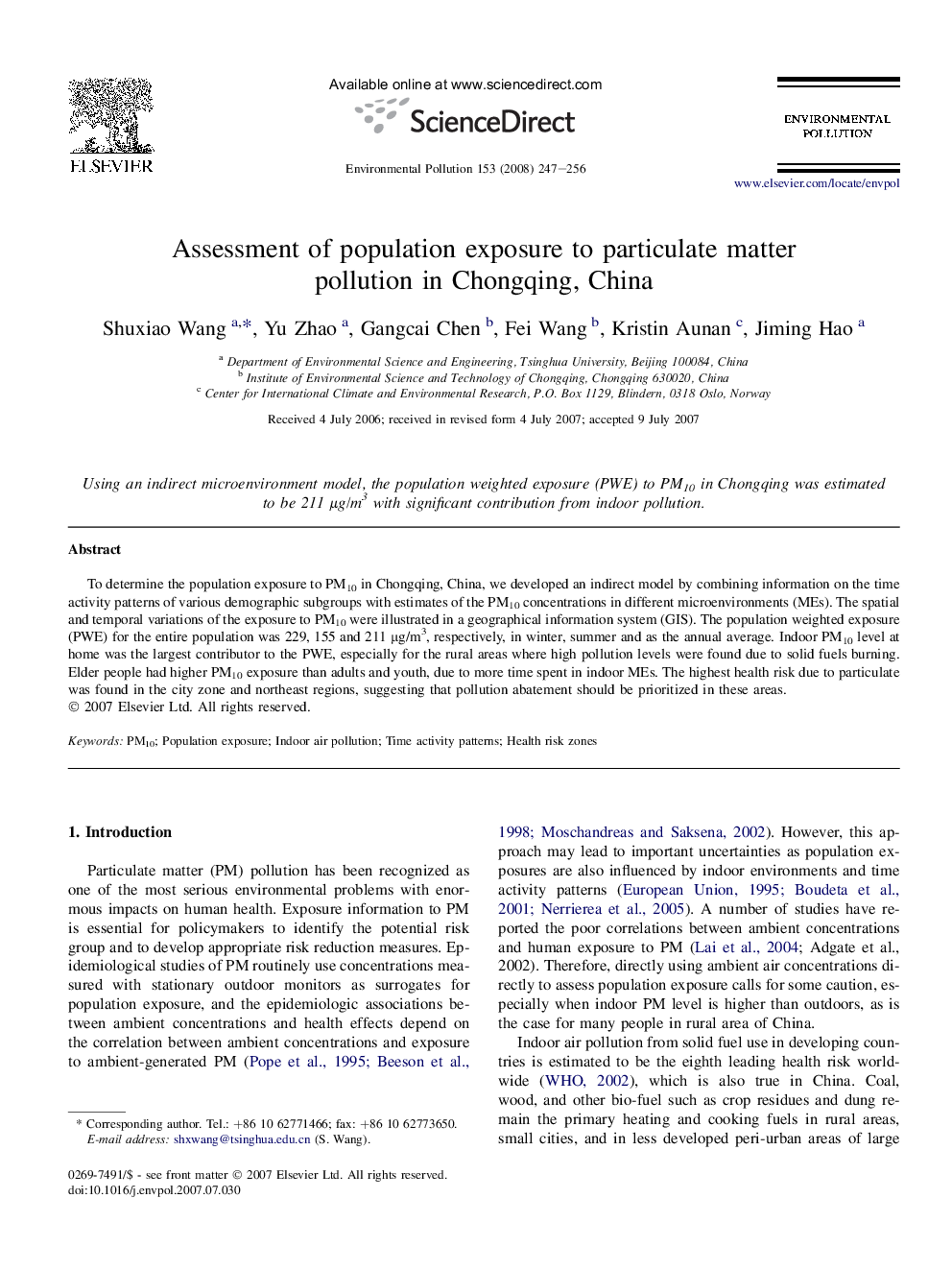| Article ID | Journal | Published Year | Pages | File Type |
|---|---|---|---|---|
| 4426749 | Environmental Pollution | 2008 | 10 Pages |
To determine the population exposure to PM10 in Chongqing, China, we developed an indirect model by combining information on the time activity patterns of various demographic subgroups with estimates of the PM10 concentrations in different microenvironments (MEs). The spatial and temporal variations of the exposure to PM10 were illustrated in a geographical information system (GIS). The population weighted exposure (PWE) for the entire population was 229, 155 and 211 μg/m3, respectively, in winter, summer and as the annual average. Indoor PM10 level at home was the largest contributor to the PWE, especially for the rural areas where high pollution levels were found due to solid fuels burning. Elder people had higher PM10 exposure than adults and youth, due to more time spent in indoor MEs. The highest health risk due to particulate was found in the city zone and northeast regions, suggesting that pollution abatement should be prioritized in these areas.
